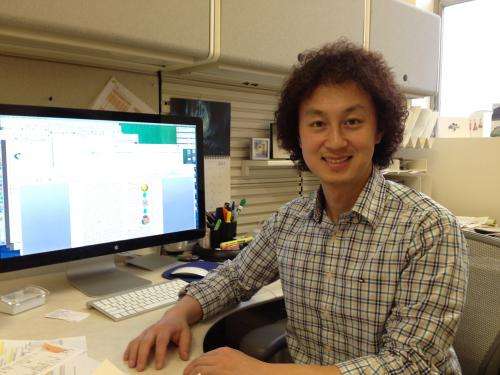Enhancing bioavailability of healthful components in food using nanoparticle design

Food scientist Hang Xiao of the University of Massachusetts Amherst recently received a four-year, $491,220 grant to study the biochemical fate of nanoemulsion-based food delivery systems in the gastrointestinal (GI) tract, hoping to re-shape them and enhance the absorption of beneficial food components encapsulated in delivery systems.
Food biochemists like Xiao believe that if taken up in appropriate amounts and forms, certain food components known as nutraceuticals might benefit human health by providing anti-inflammatory or anti-cancer effects. Nutraceuticals include flavonoids and carotenoids in fruits and vegetables, for example.
This project, supported by the U.S. Department of Agriculture's National Institute of Food and Agriculture, will focus on manipulating the structure and composition of nano-emulsion delivery systems to modify the fate of encapsulated nutraceuticals in the GI tract to enhance their bioavailability.
"In the last decade, knowledge has been advancing about how to effectively deliver beneficial components in food. This research will allow us to direct the assembly of nano-emulsion droplets to create characteristics that will dictate how they are digested and absorbed," Xiao explains. "This would be a model for nutraceutical delivery in a wide range of food products. Someday prepared foods may help lower our risk of cancer, for example."
Specifically, using both cell culture and animal models, Xiao and colleagues will design lipid nanoparticles at three stages: From nano-emulsion droplets containing nutraceuticals, to mixed micelles and finally to chylomicrons. To start this process, digestion physiochemically disassembles nano-emulsion droplets. The resulting chemical components are then assembled into mixed micelles in the small intestine, where epithelial cells called enterocytes take them up. There they are reassembled into chylomicrons and absorbed into blood circulation through the lymph system.
The scientists want to influence the size and composition of chylomicrons, because these characteristics dictate the fate of nutraceuticals encapsulated in the chylomicrons. Certain sizes and compositions are better able to deliver nutraceuticals to the lymph system, which protects nutraceuticals from being cleared by the liver. This will enhance bioavailability of flavonoids and other beneficial compounds to the body, potentially offering health benefits.
"We're basically utilizing what already happens in our bodies all the time, but introducing food-grade nano-emulsion systems that can influence the nature of mixed micelles as well as chylomicrons," says Xiao. "It's safe, it's all digested and simply delivers beneficial food components to a greater extent than if the system was left alone."
Xiao, a specialist in how food components interact with biochemical processes in the GI tract, will work with UMass Amherst colleagues including Julian McClements, an expert in the design of nano-scale delivery systems, and Eric Decker, an expert in food chemistry. This team is among the world's most accomplished groups at using food-grade delivery systems to enhance health benefits of food components.
Provided by University of Massachusetts Amherst


















